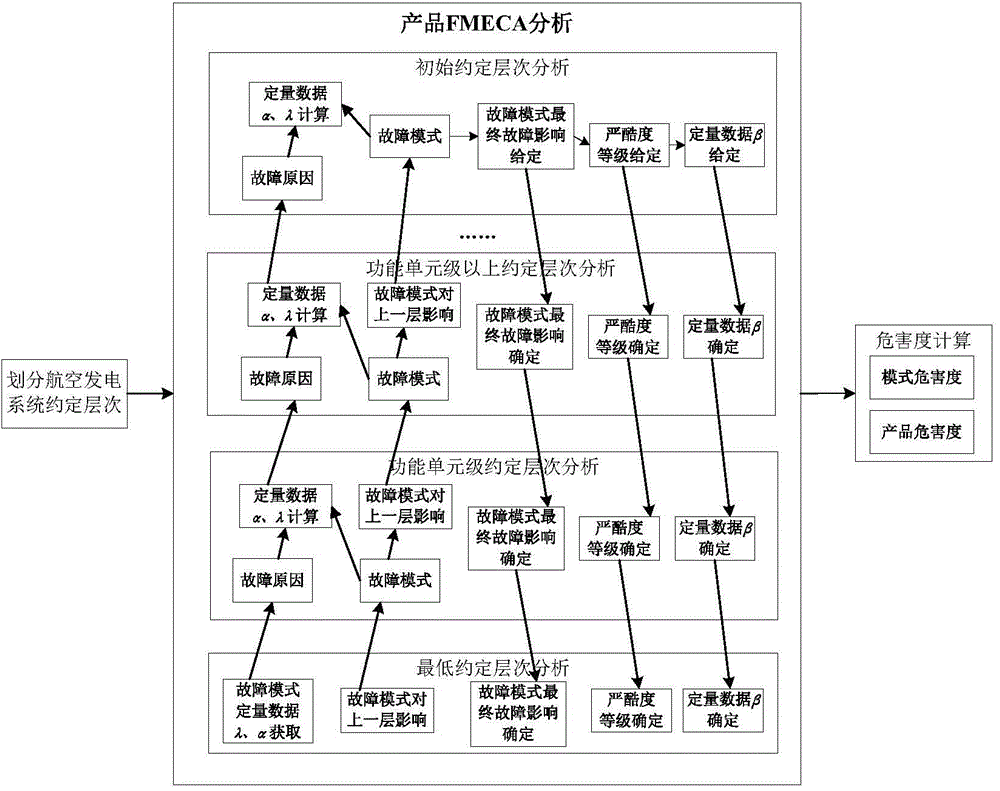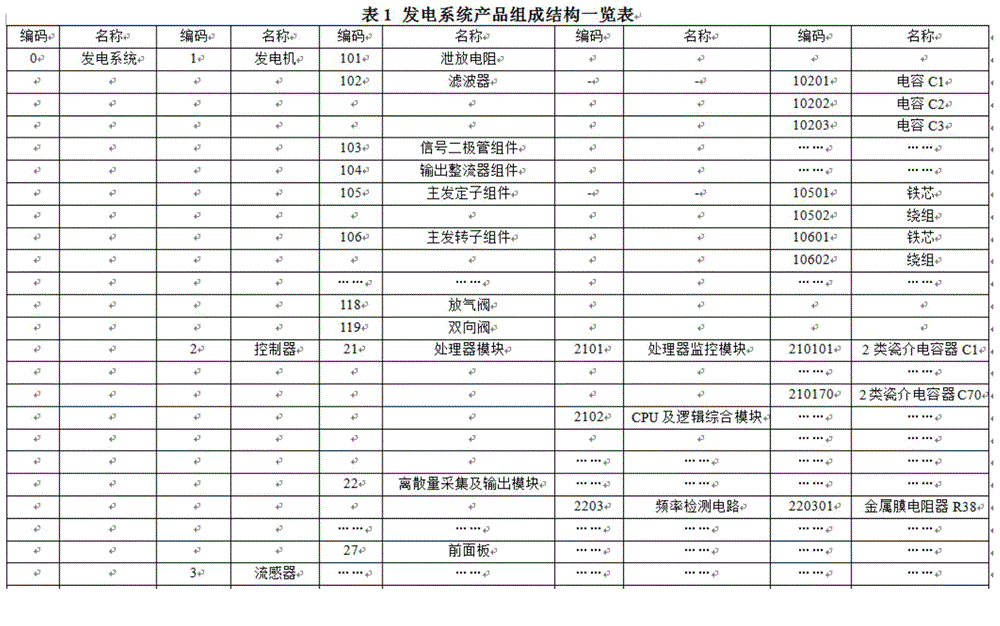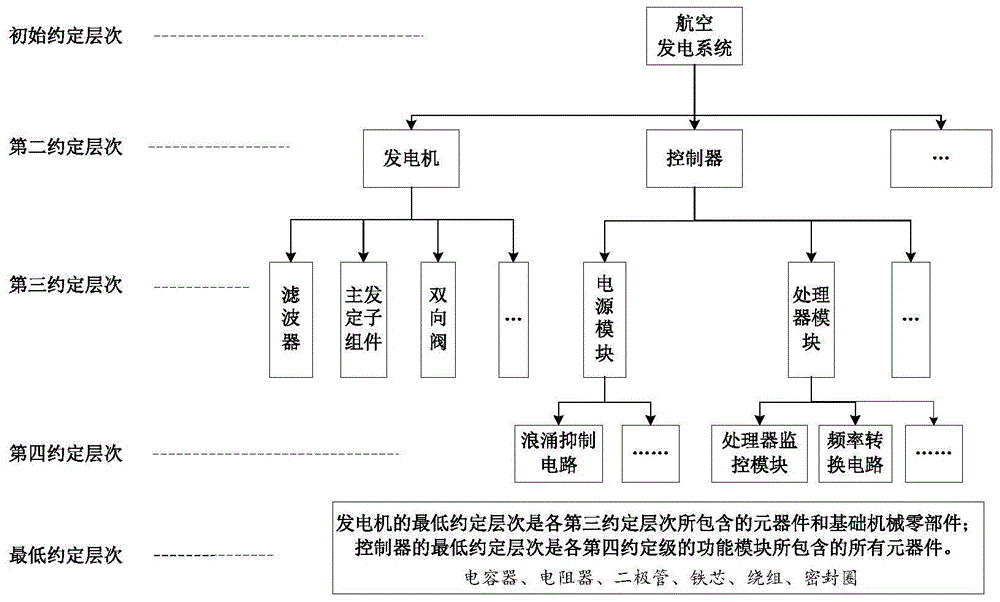Aviation power generation system quantitative hazardness analysis method based on data transmission
A power generation system and hazard technology, which is applied in the field of quantitative hazard analysis of aviation power generation systems, can solve problems such as the inability to analyze the hazards of electromechanical products, and achieve accurate results
- Summary
- Abstract
- Description
- Claims
- Application Information
AI Technical Summary
Problems solved by technology
Method used
Image
Examples
Embodiment Construction
[0052] The present invention will be further described in detail below in conjunction with the accompanying drawings and embodiments.
[0053] The quantitative hazard analysis method of aviation power generation system based on data transmission provided by the present invention is to determine the quantitative data information such as failure rate and failure mode frequency ratio for the electronic components in the power generation system based on GJB299C, and determine the non-electrical part based on the main factor. And mechanical probability reliability design method to determine its failure rate and other data, on this basis, based on the transmission relationship among failure modes, causes and effects, accurately calculate the hazard degree Cr of products at all levels, and complete the CA analysis of the overall aviation power generation system. The quantitative hazard analysis method of the aeronautical power generation system of the invention supplements and assists...
PUM
 Login to View More
Login to View More Abstract
Description
Claims
Application Information
 Login to View More
Login to View More - R&D
- Intellectual Property
- Life Sciences
- Materials
- Tech Scout
- Unparalleled Data Quality
- Higher Quality Content
- 60% Fewer Hallucinations
Browse by: Latest US Patents, China's latest patents, Technical Efficacy Thesaurus, Application Domain, Technology Topic, Popular Technical Reports.
© 2025 PatSnap. All rights reserved.Legal|Privacy policy|Modern Slavery Act Transparency Statement|Sitemap|About US| Contact US: help@patsnap.com



